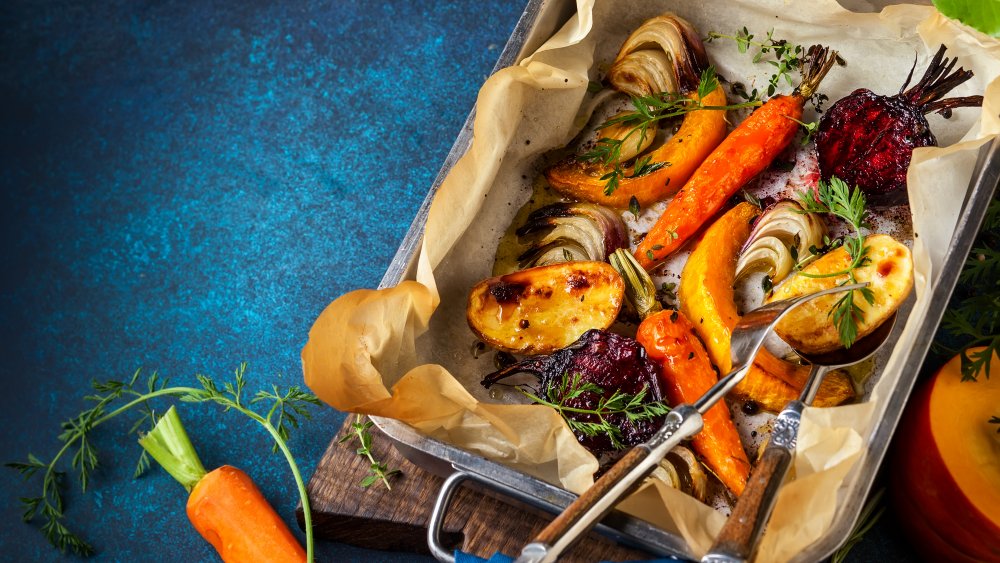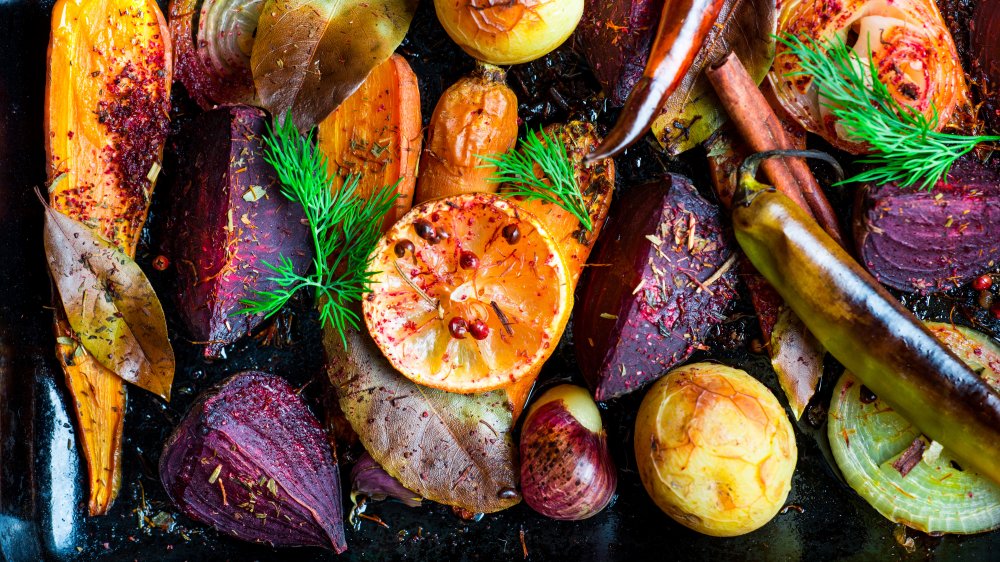The Real Reason Roasted Vegetables Taste Sweeter
Veggies often receive the wrong end of the carrot stick when they're served up raw, eliciting a chorus of "ew" from vegetable-averse eaters. But there's an easy way to transform them into nuggets of melt-in-your-mouth sweetness when you have a little time on your hands: roasting. As one LifeHacker writer put it, it's a no-fuss way to transform pretty much all veggies into "more complex and intensely flavored versions of their fresh selves." In fact, with the right recipe, the humble roasted vegetable can even break the internet.
Many agree that roasting is a tastier way to receive the benefits of all that plant power. Though dry-roasting veggies doesn't greatly impact their nutrition counts, it's true that some nutrients, vitamins, minerals, and enzymes may diminish in any heating process — but roasting is still considered a better cooking option to keep them intact than, say, boiling (via Livestrong). In the case of carrots, cooking actually promotes the body's better absorption of their health-boosting carotenoids.
But, let's face it, most people simply crave the much-improved flavor that comes from roasting vegetables. In the oven, they develop a "sweet, nutty, toasty flavor," with "lightly browned, crispy" skins surrounding "tender, honeyed flesh" (via Chowhound). And it turns out that there is a specific science behind their more concentrated, sweeter flavors.
How the caramelization process adds sweetness
In essence, roasted vegetables' enhanced sweetness emerges from the caramelization process. Chowhound explains that a dry-heat cooking method like roasting brings out vegetables' natural sugars, ultimately unleashing "hundreds of new aromatic compounds" that offer up a feast of deeper flavors.
But, for true cooking nerds, things can get pretty complex: Science of Cooking details that caramelization describes sugar's oxidation, which is "a type of non-enzymatic browning reaction" that creates "nutty flavor and brown color" as "volatile chemicals are released, producing the characteristic caramel flavor." During the cooking process, water releases from the vegetables in the form of steam, and sugars break down.
The caramelization process shouldn't be confused with the Maillard Reaction, which also creates a browning effect but is related instead to the breaking down of proteins — you'll witness this reaction when grilling a steak or toasting bread (via Bon Appétit).
Science of Cooking adds that different sugars caramelize under certain temperatures. For sucrose and glucose, that's about 160 degrees Celsius, or 320 degrees Fahrenheit, while fructose requires 110 degrees Celsius, or 230 degrees Fahrenheit. And, though roasting can improve almost any vegetable's flavor, the best candidates for caramelization are sugar-rich, low-acid veggies, like carrots and onions (via The Arizona Republic).
Yes, there's some deep science behind the process, but roasted-veggie lovers know they simply taste better. 'Nuff said!

